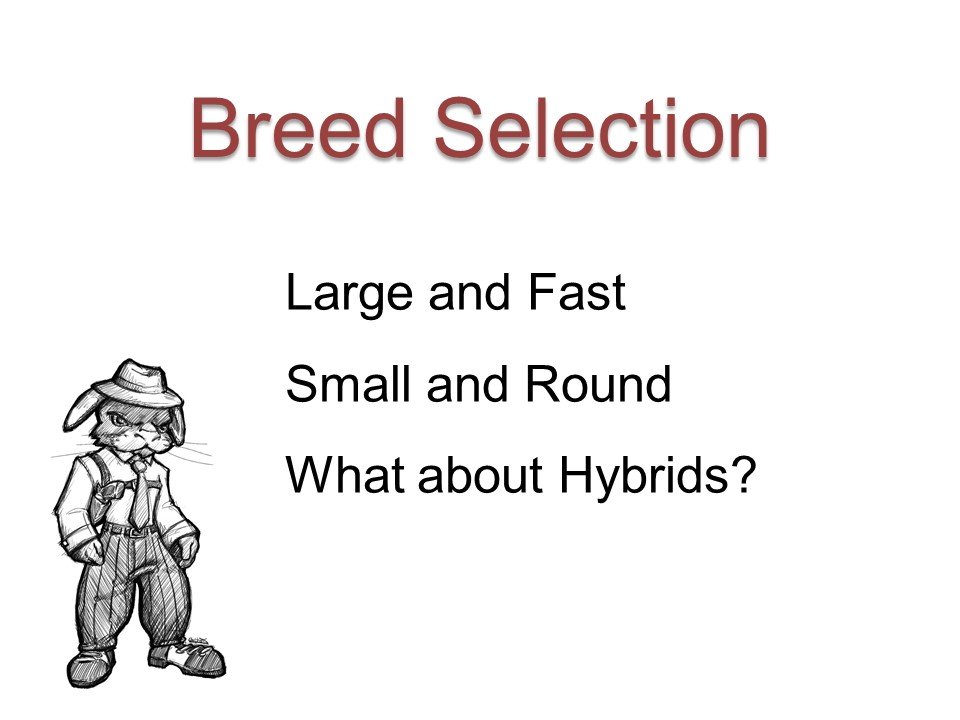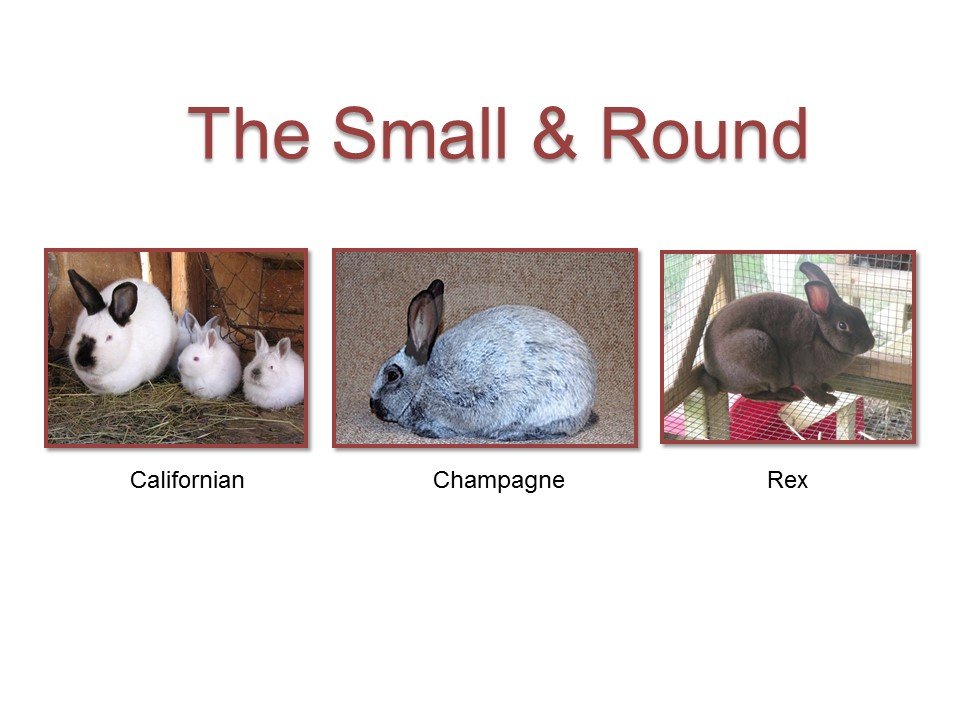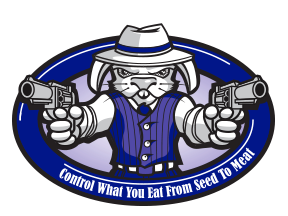Meat Rabbit Breed Selection
In the world of rabbits, the number of breeds is astounding. Dwarfs to giants, Netherlands to New Zealand, even some named after LIONS of all things! The names and sizes vary so much that we aren’t going to list them all here. We are going to focus on meat rabbit breeds. If you have an interest in showing and breeding non-meat breeds, I encourage you to do so! You’ll have a LOT of fun either way. Our purpose for raising rabbits in the “Bunnies on the Balcony” series, however, is feeding our family good food. In this installment, we will be looking at the meat rabbit breed selection.

Meat breed rabbits have been selectively bred for centuries. The meat rabbit breeders have looked for attributes such as size, shape, meat to waste (bone and innards uneaten) ratio and grow out times. They kept back the best producers with the biggest hind legs, widest & longest backstraps, fastest grow out times and smallest bone structures. This selective breeding has given us rabbits with highly efficient growth patterns.
Somewhere along the line, however, there seems to have been a split in preference; large and fast vs small and fat... Some groups of breeders started breeding fat, round rabbits that would hit 3-3.5 pounds in 8-10 weeks. These rabbits are more efficient on food than the second line of meat breeds, which hit 5 pounds in 8-10 weeks but have a lower meat to bone ratio than the small and fat rabbits. I’ll warn you now, not many other meat rabbit bloggers have made this distinction, they’re usually more breed biased.
Large and fast

In the large and fast group, you find breeds like the New Zealand white, Palomino, American Blues/Whites, American Chinchilla Fur and the like. These rabbits are larger framed and have been described as having a “mandolin” shape to them. Their back straps are long, and their hind legs are thick. The females can care for 8 kits fairly easy since they have 8 nipples. They do spend more resources on bone structure than the Fat and Round group, effectively less meat on the same feed as the smaller group. If you have use for pelts, bones and the normally discarded innards, this group of meat rabbits is a great option.
Small and Round

Californians, Standard Rex, Florida whites, and Champagne D’argent are all examples of what I consider “Small and Round.” These rabbits get fat just LOOKING at food. Their smaller frames fill up with thick meat and the food they eat is mostly spent on muscle mass. As we have covered, the Small and Round rabbits are more efficient because their bone density is lower, and their innards make up less of the bunnies’ weight. At 8-10 weeks, you will get a FAT 3-pound to 3.5-pound bunny. Some breeders will weight a few more weeks to butcher, adding a bit more weight. The added time lowers the rabbits’ efficiency but does increase weight.
Meat Rabbit Hybrids?
There are advantages and disadvantages to raising rabbits in these two groups. However, a third method has been tried and found viable, raising BOTH! If you cross a large and fast rabbit with a small and round rabbit, you get the faster growth rate of the former, while enjoying the higher efficiency of the latter. The downside is you will need to maintain pure lines from both groups, replacing aging breeders as you go from the respective shape and size. The hybrids produced are essentially meat mutts, bred for the sole purpose of being eaten. If you were to start breeding the mutts, their offspring would start losing the desired traits of the purebred progenitors. Something to think about when making your Meat Rabbit Breed Selection.
A more in-depth description of different meat rabbit breeds can be found on the Imperfectly Happy webpage. My friend Tiffany. The owner of Imperfectly Happy also goes into depth on why the “giant breeds aren’t a good choice for meat rabbits.
There are some great free online tools that will help you while you raise rabbits, find them Here

